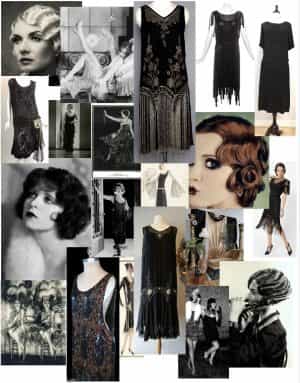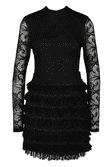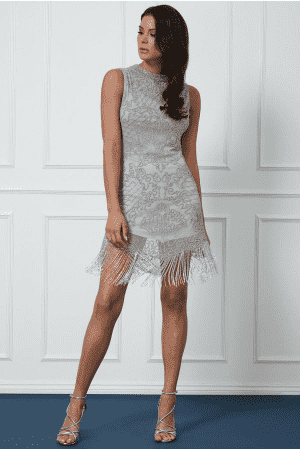
1920s inspired mood-board
The 1920s was a revolutionary period in fashion history as women explicitly defied the societal body standards of past years and embraced both their femininity and independence. The flapper subculture that sprung up and has come to define the era prompted a boyish shape, less restricting undergarments and an overall carefree attitude for young women.
A cropped, easy to maintain bob was all the rage, along with dark, heart shaped lips. Hemlines rose and waistlines dropped to accommodate a lively nightlight. The classic fringe dress we associate with the 1920s was highly popular with the very notion of an LBD or little black dress invented by Chanel in this era. Feathers, fringe and beading became the popular adornment of womenswear, as opposed to the brocade and embroidery styles of past decades.
However, whilst many young women embraced the flapper lifestyle and masculine dressing popularized by Chanel, some did not. Poiret produced bright, eastern inspired designs whilst Lavin created the robes de styles which featured a more traditional, wide skirt reminiscent of the crinoline that had previously dominated women’s fashions. The 1920s also serves as an example of how fashion trends can also influence lifestyles and beauty standards. With the expose of more skin, women began to favour a suntan over the pale complexions of the past.
The flapper styles of the 20s are easy to re-create today, with dropped waist dresses, fringe and inspired embellishments. Style with dark plum lips and classic waves for an even more obvious nod the the past.
Here’s our three essential 1920s looks on the high street now:



